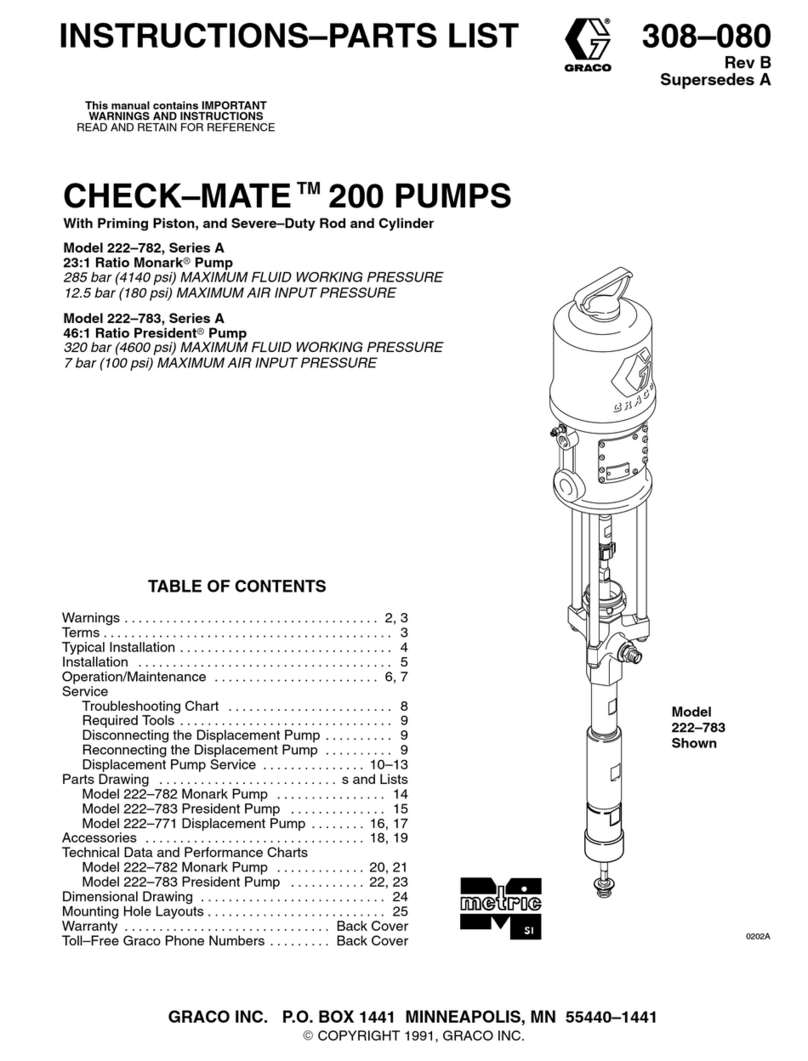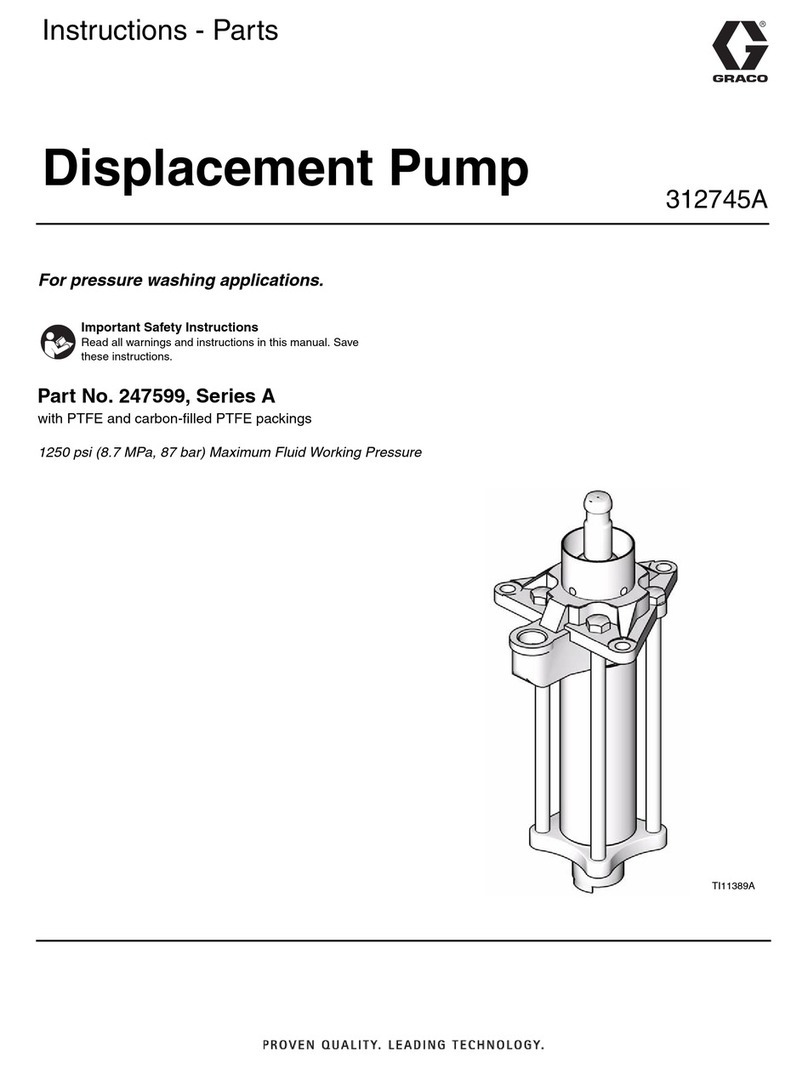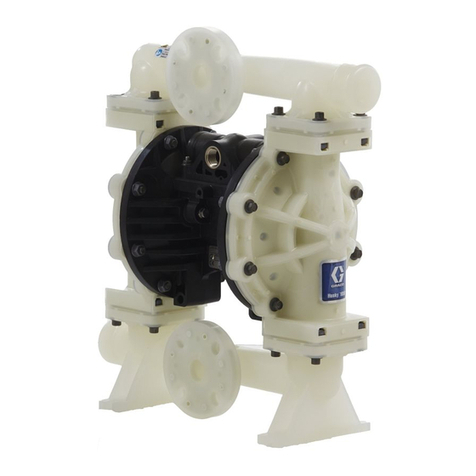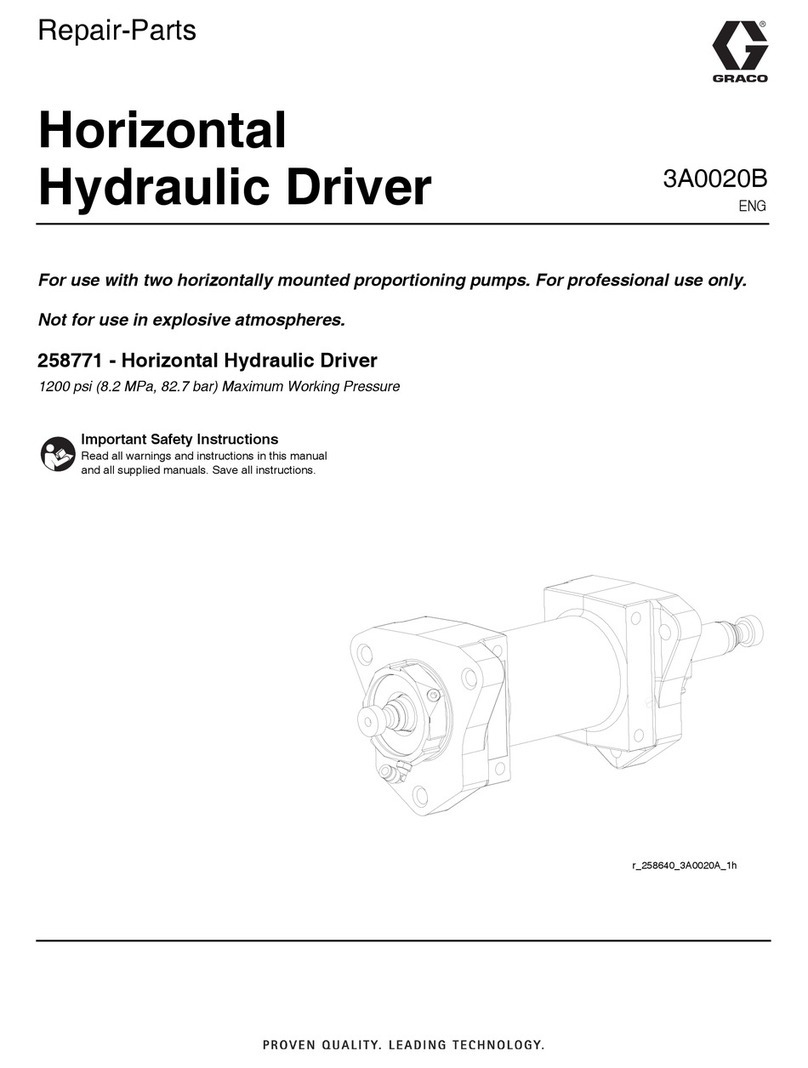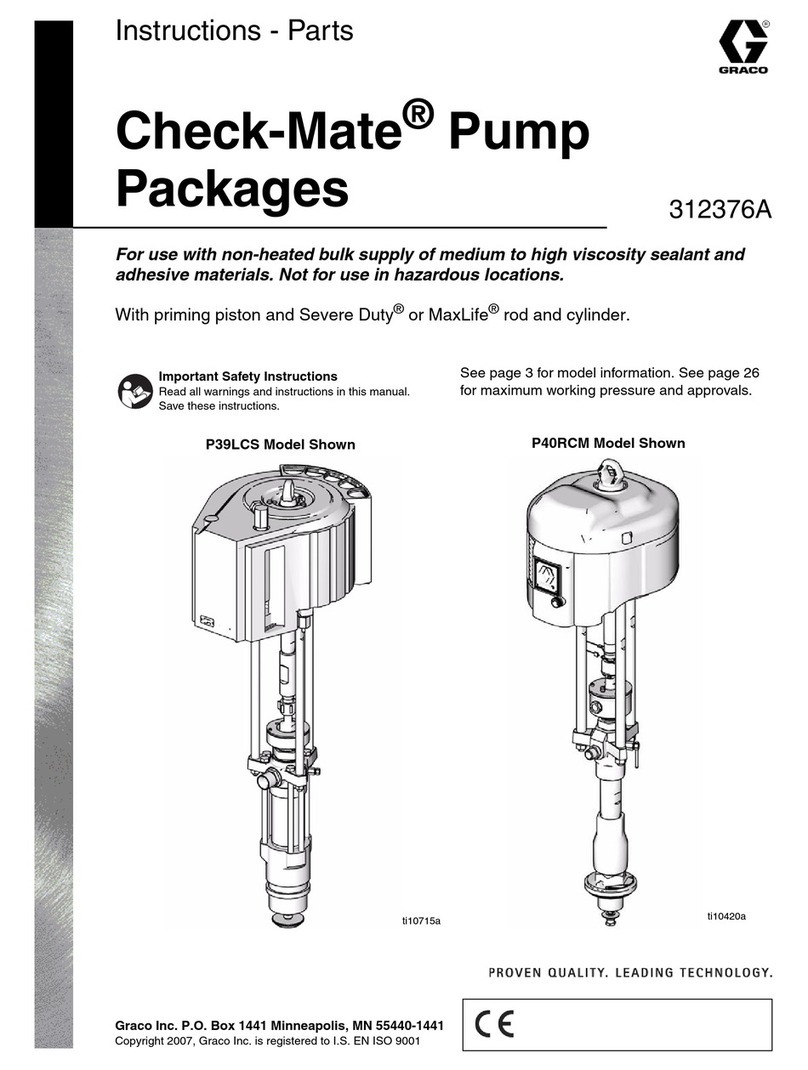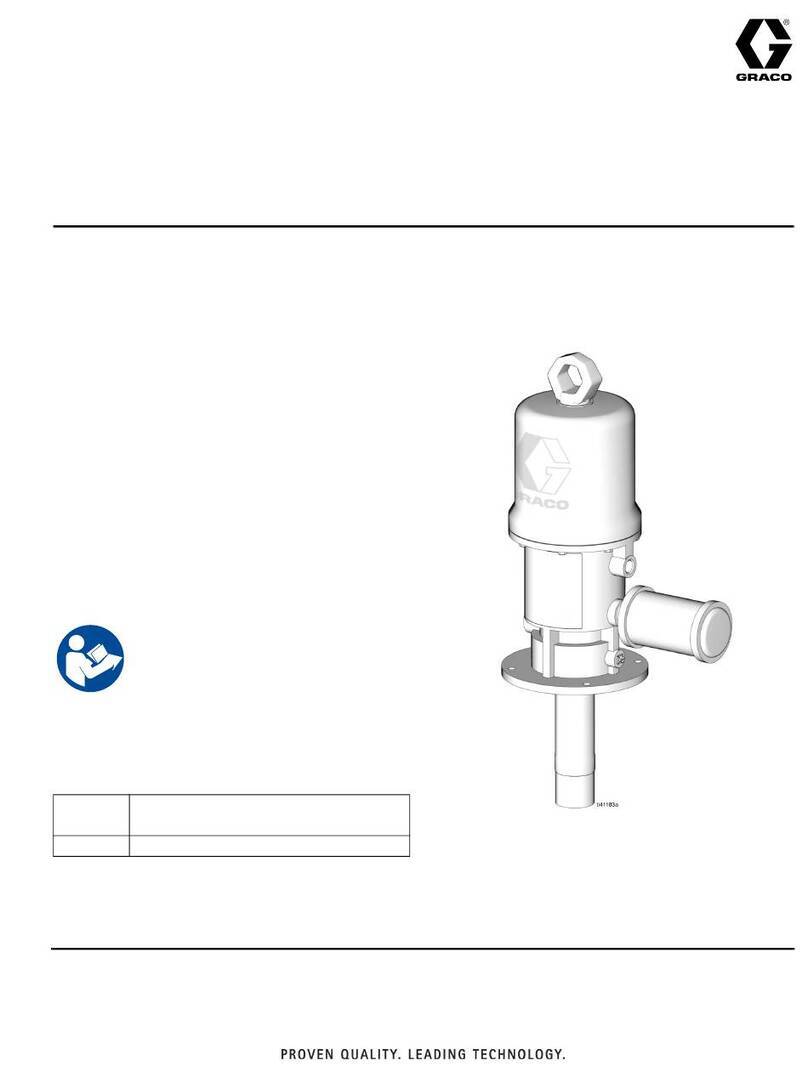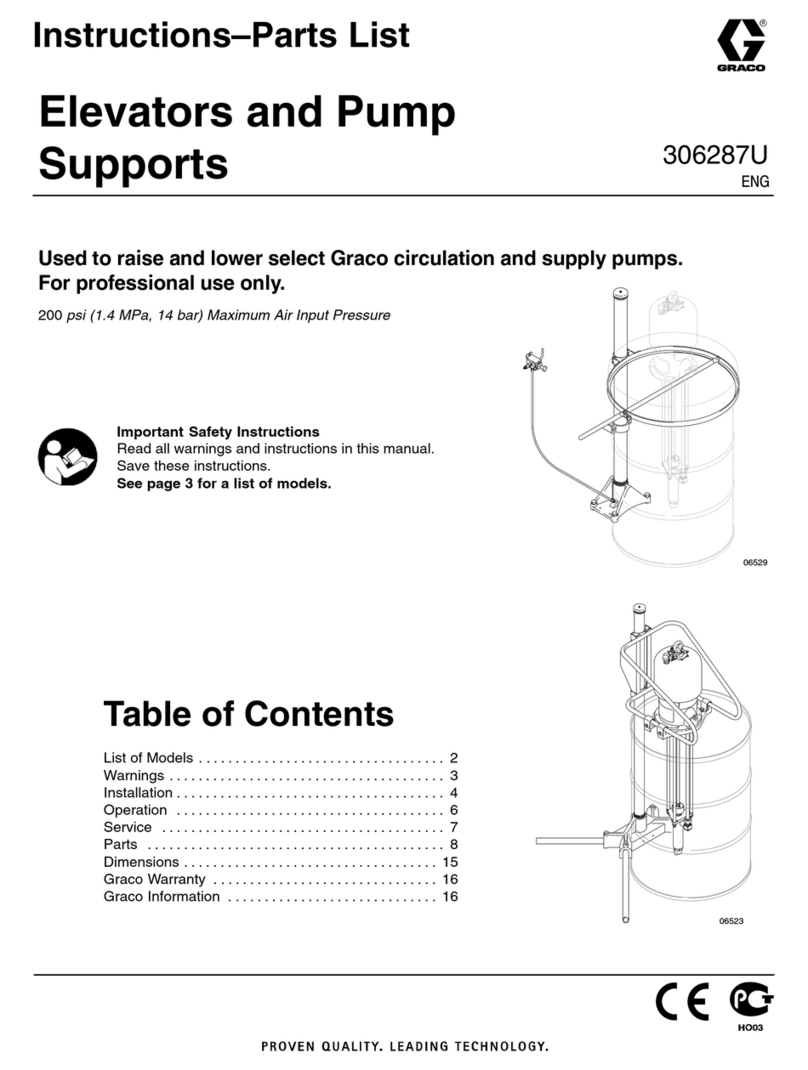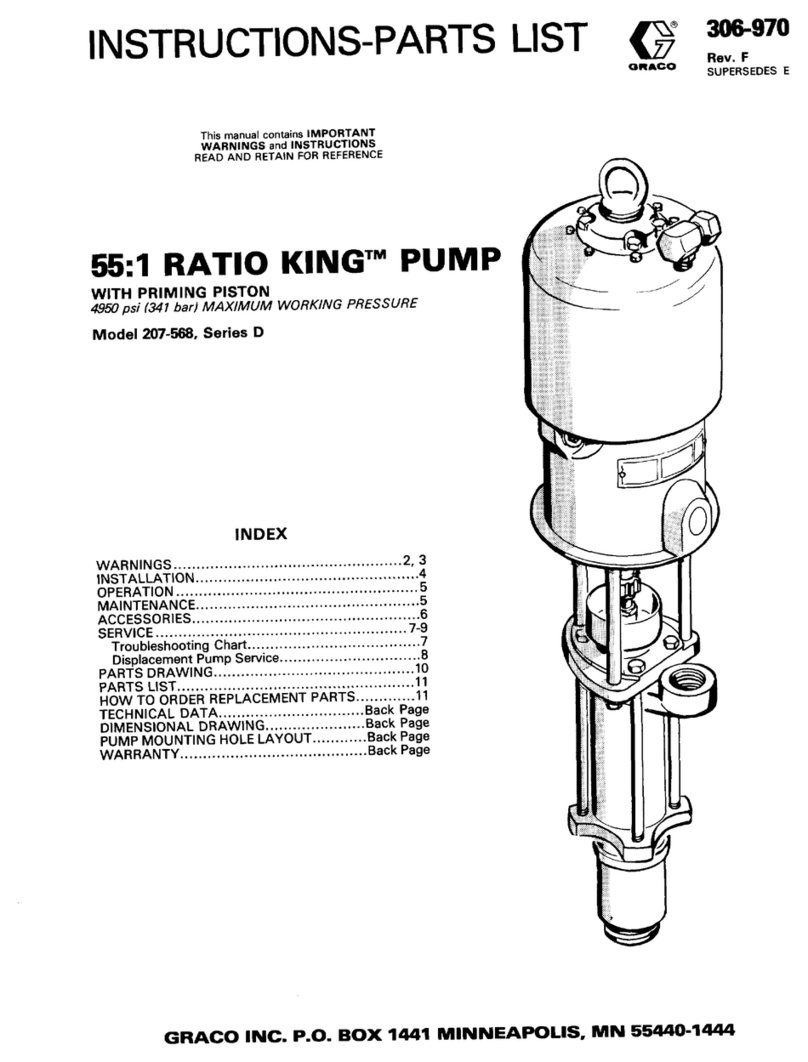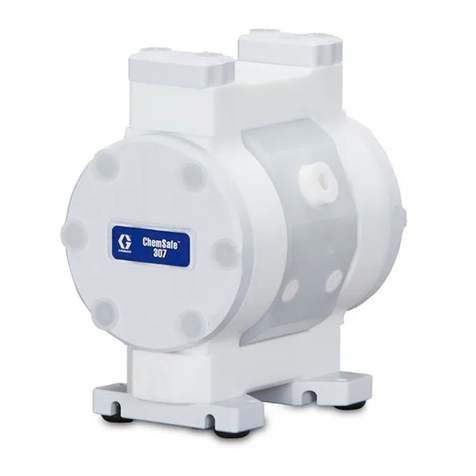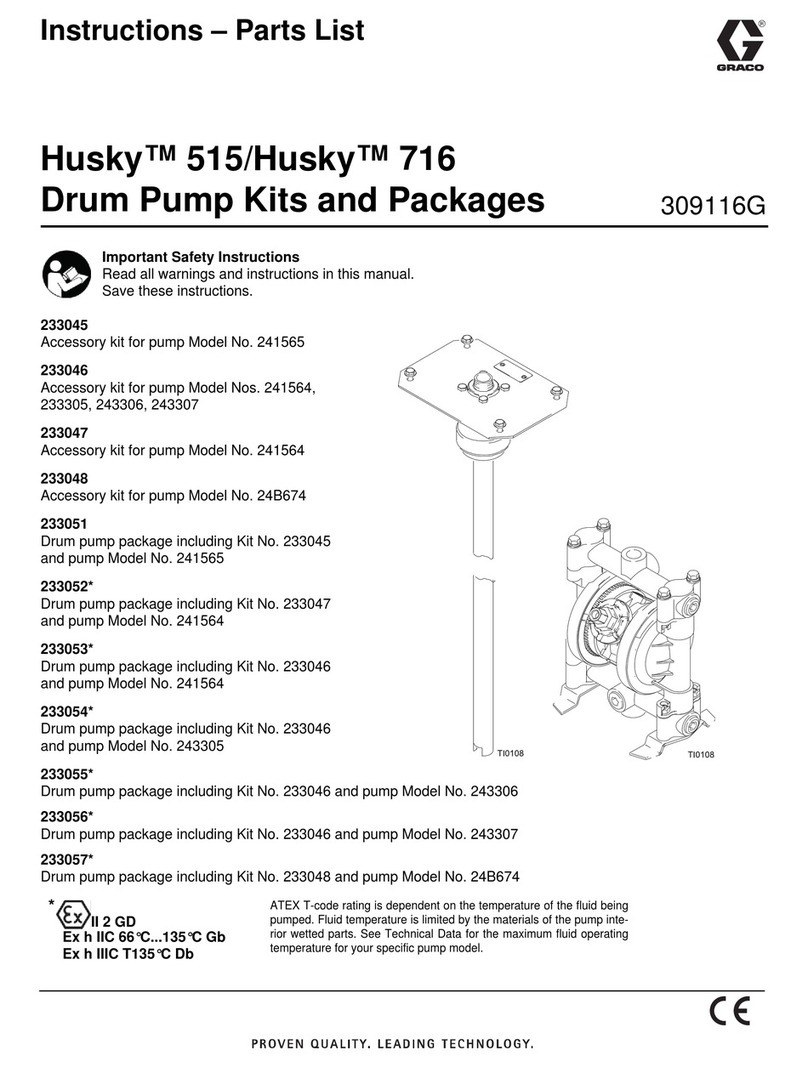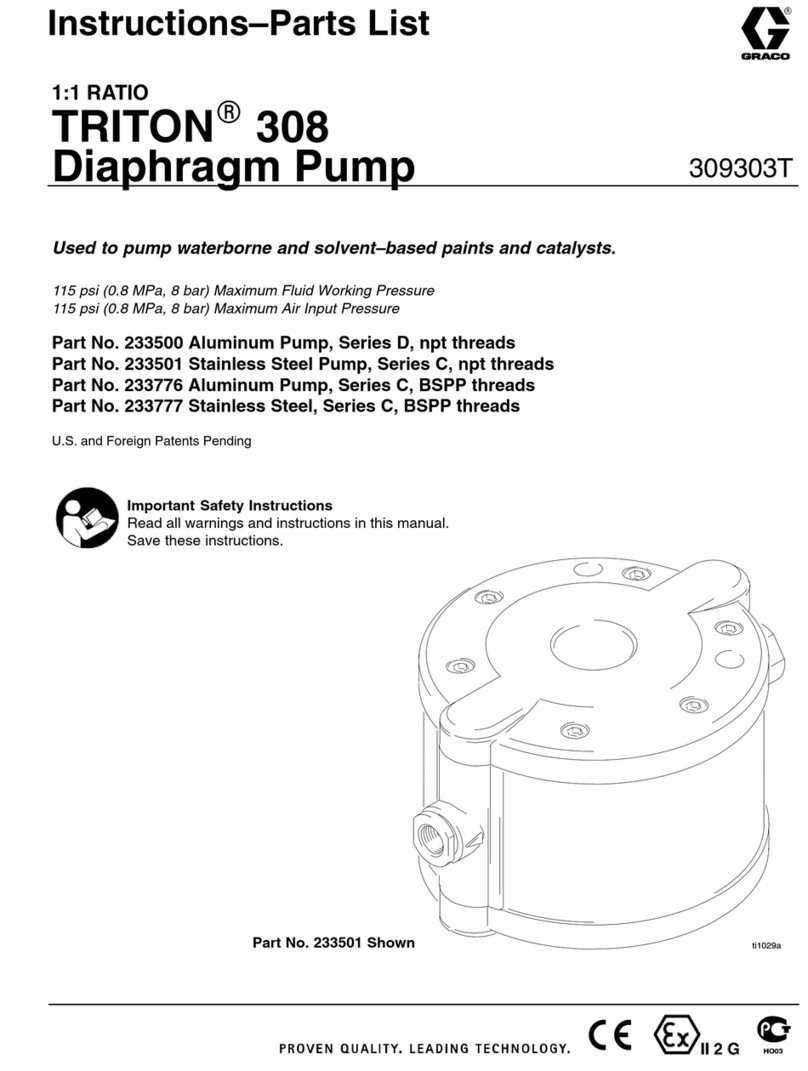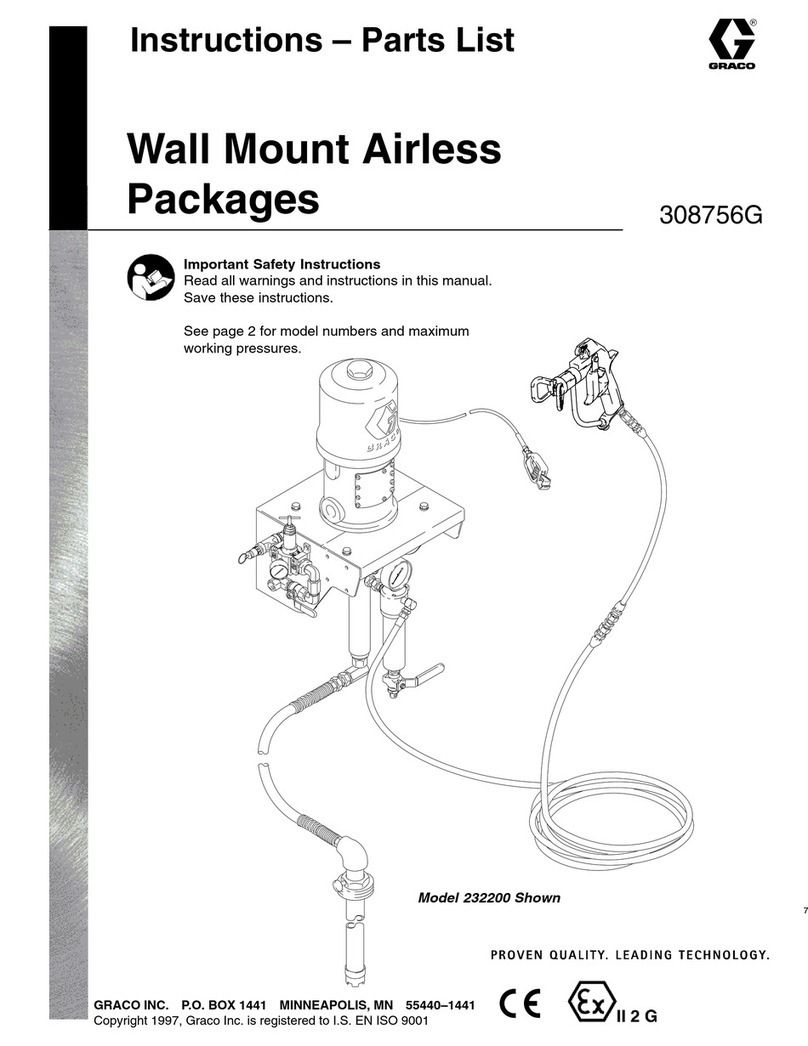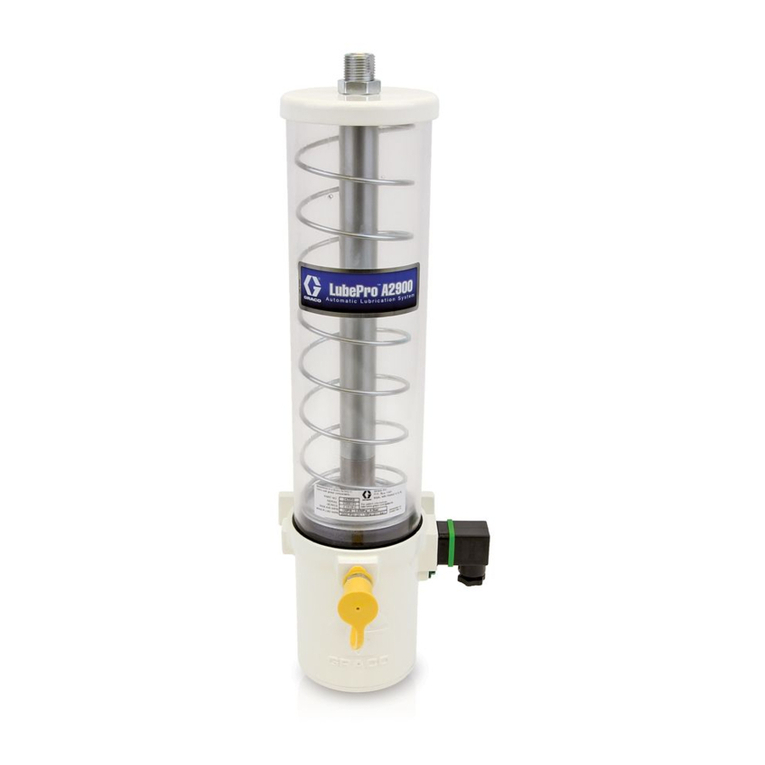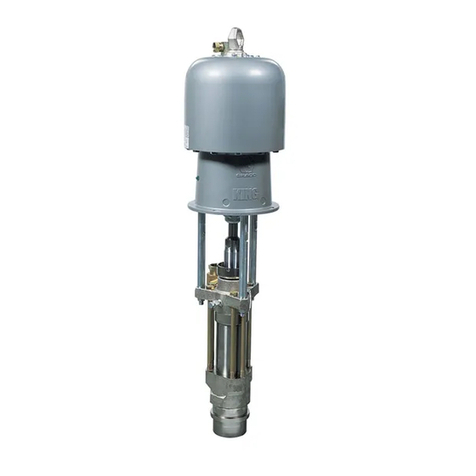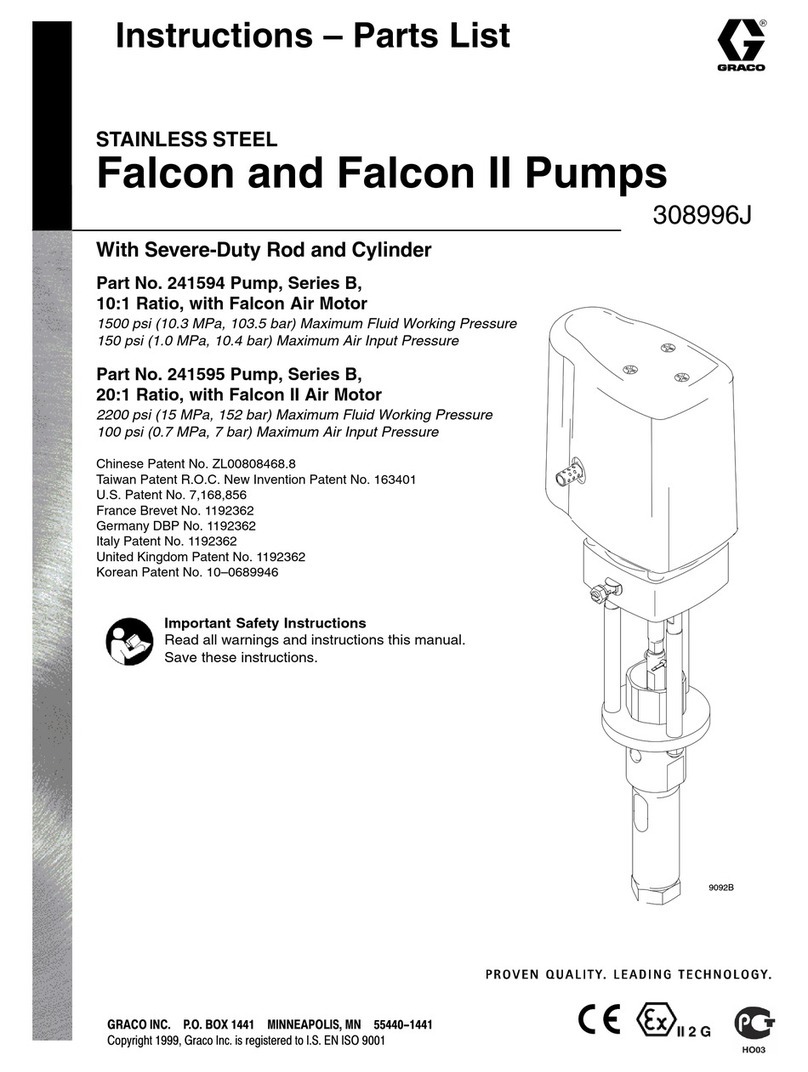
MlGH
PRESSURE SPRAY CAN
CAUSE
SERIOUS INJURY.
FOR
PROFESSIONAL
US€
ONLY. OBSERVE ALL WARNINGS.
i
i
_. .
I
i
Read
and
understand
all
instruction
manuals
before
operating
equipment.
\
I
I
Gensral Safety
This equipment generates very
high
fluid pressure. Spray from
Spray
TiplNozzle
Safety
the gunldispensing valve, or from leaks or ruptured com- tipslnoules. If the spray tiplnozzle clogs while spray
-
Use extreme caution when cleaning or changing spray
ponents can iniect fluid through your skin and
into
your body ingldispensing, engage the safety latch immediately.
for amputation. Also, fluid injected or splashed into the eyes then remove the spray tip to clean
it;
and cause extremely serious bodily injury, including the need ALWAYS follow the Pressure Relief Procedure, below, and
or on the skin can cause serious damage. NEVER wioe
off
build
-
up around the spray tiplnozzle until
NFVER
mint
the
snrav
ounldisoensino valve at envone or at dressure isfullv relieved and the safetv
latch
is~enaaaed.
I
any pert of the body. NEVER
put
hand or finger; over the
spray tiplnozzle. NEVER try to
"
blow back!' paint; this is NOT
Pressure
Relief
Procedure
an air spray system. To reduce the risk of serious bodily injury, including fluid injec-
tion, splashing in the eyes or on to the skin, or injury from
ALWAYS have the
ti0
ward in place on the spray
Q
UO
when moving parts, always follow this procedure whenever you
.r~.,
-
~~~ ~
"
~~
"
I
I.:'..
1
;,;,.:.:
.:
....~
,.
..,
.
._
spraying.
.
..
ALWAYS follow the Pressure Relief Procedure. to the
vicing any system equipment.
right, before cleaning or removing the spray tiplnozzle or ser-
NEVER try to stop or deflect leaks with your hand or body.
Be sure equipment safety devices. are operating properly
before each use.
Medical
Alart-Alrlesa
Sorav
Wounds
"l.l
.
.
-r--,
If any fluid appears to penetrate your skin, get EMERGENCY
MEDICAL CARE
AT
ONCE.
DO
NOT TREAT AS A SIM-
PLE CUT. Tell the doctor exactly what fluid was injected.
jury.
It
Is
Important
to
treat the
injury
surgically
es
soon
Note
to
Physician:
Injection
in
the
skin
is
a traumatic
in-
as possible.
Do
not delay treatment to research toxicily.
Toxicily is
a
concern
with
some
exotic coatings injected
surgeon or reconstructive hand surgeon may be advisable.
directly into the blood stream. Consultetion
with
a plastic
Spray
GurdDispensing
Valve
Safety Devices
Be sure all gunldispensing valve safety devices are operating
properly before each use.
Do
not remove or modify any part of
the gun or dispensing valve; this can cause a malfunction and
result in serious bodily injury.
Safety Latch
Whenever you stop spreyingldispensing, even for
a
moment,
always set the safety latch
in
the
closed or
"
safe
"
position,
making the gunldispensing valve inoperative. Failure to set
the safety latch cen result
in
accidental triggering of the
gunldispensing valve.
Diffuser (only
on
spray
guns)
The gun diffuser breaks up spray and reduces the risk of fluid
injeciion when the tip
is
not installed. Check diffuser operation
regularly. Follow the Pressure Relief Procedure, at the
right, and then remove the spray tip. Aim the gun into a
grounded metal pail, holding the gun firmly to the
pail.
Using
the lowest possible pressure, trigger the gun. If the fluid emit
-
ted
is
not diffused into an irregular stream, replace the diffuser
immediately.
ALWAYS haw the
tip
guard
in
place on the spray gun while
Tip Guard
(only
on
spray
guns)
spraving. The tip guard alerts you to the fluid iniection
hazard
and helps reduce,
but
does not prevent, the riskof eccidental-
spray
tip.
h,
placing your fingem or any part of your body close to the
Tdgger
Guard (if
so
equipped)
NEVER operate the gunldispensing valve
with
the trigger
guard removed. The trigger guard reduces the risk of acciden
-
tally triggering the gun if
it
is dropped or bumped.
2
307-728
shut
off
the pump, when checking or servicing any part of the
sprayldispensing system, when installing, cleaning or chang
-
ing sprayldispensing tips, and whenever you stop
sprayingldispensing.
2.
Shut
off
the air to the pump.
1.
Engage
the
safety latch.
3.
Close the bleed
-
type master air valve (required in your
~~
4.
Disengage the safety latch.
5.
Hold a metal part of the gunldispensing valve firmly to the
side of a grounded metal pail, and trigger the gunldispens-
ing valve to relieve pressure.
system).
7.
Open the drain valve (required in your systeml, having a
6.
Engage the safety latch.
8.
Leave the drain valve open until you are ready to spray
container ready to catch the drainage.
again.
If
you
suspect that the spray tiplnozzle or hose
is
completely
clogged, or that pressure has not been fully relieved after
following the steps above, VERY SLOWLY loosen the retain
-
ing nut or hose end coupling and relieve pressure gradually,
then loosen completely. Now clear the tiplnozzle or hose.
General
Safety
Any misuse of the sprayldispensing equlpmenr or ac
-
cessories, such as overpressurizing, modifying parts, using in
-
compatible chemicals and fluids, or using worn or damaged
parts, can cause them to rupture and result in fluid injection or
other serious bodily injury, fire, explosion or property damage.
NEVER alter or modify any part of this equipment; doing
so
could cause
it
to malfunction.
worn or damaged parts immediately.
CHECK all spray equipment regularly and repair or replace
Read and follow the fluid and solvent manufacturer's literature
regarding the use of protective clothing and equipment.
System
Pressure
The maximum safe working pressure is determined by the air
motor.
DO
NOT exceed the maximum working pressure stated
on your complete pump. Be sure
that
all system components
and accessories are rated to withstand the maximum working
pressure of the complete pump.
Fluid
Compatibility
BE SURE that all fluids and solvents used ere chemically corn:
oatible with the wetted Darts shown in the Technical Date on
the back cover. Always read the manufacturer's literature
bwfore using fluid or solvent in this pump.
i

